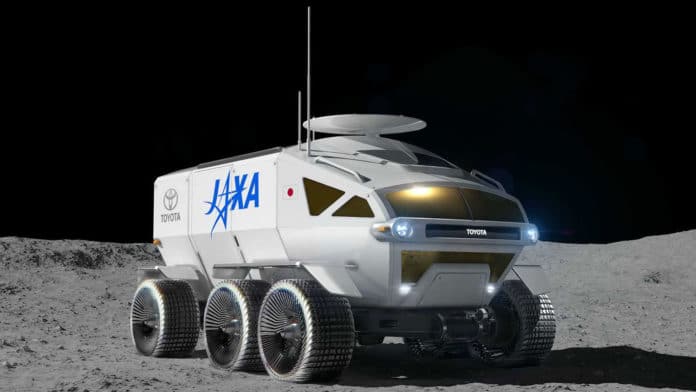Space is the dream of the world’s largest companies. The Japanese manufacturer Toyota Motor Corporation (Toyota) is no exception to the rule by signing a joint research agreement to work on a manned pressurized lunar rover with the Japan Aerospace Exploration Agency (JAXA).
JAXA and Toyota now announced that the particularly spectacular hydrogen-powered rover, which will help humanity explore the surface of the Moon, and someday Mars too, is nicknamed as “LUNAR CRUISER.”
“The nickname LUNAR CRUISER was chosen because of the familiar feeling it offers the people involved in the development and manufacture of the vehicle prototype as part of the joint research project as well as the familiarity it will provide the general public,” explains the Japanese agency, in a joint statement with Toyota. The name, which references the Toyota Land Cruiser SUV, was decided upon based on the quality, durability, and reliability expected of the pressurized lunar rover. Even more, it will be traveling the unknown and the harsh environment of the Moon’s surface.

The six-wheeled vehicle would be approximately six meters long, five meters wide, and about 3.8 meters high with the living space of 13 cubic meters. It is designed for two but can carry four people in an emergency and have a lunar cruising range of more than 10,000 km (6,200 miles). Using the combination of fuel cell and solar panels, the LUNAR CRUISER can recycle water back into hydrogen to increase the driving range.
Jaxa and the automaker signed a joint research agreement to work on the rover last year, with a launch date scheduled for the second half of the 2020s. Currently, the companies are in the conceptual part of the project, which includes the “identification of technological elements that need to be developed the rover and elaboration of specifications for the prototype”, soon afterward they will manufacture the parts and a rover prototype, which will be evaluated in 2021.
The research also involves the use of simulations to confirm power performance and heat dissipation while driving, the manufacture, and evaluation of tire prototypes and the use of virtual reality and full-scale models to consider the layout of the equipment in the cabin.
The plan is to have a full-scale model in 2022 with which to carry out the first data collections, build a functional prototype in 2024 and, already in 2029, create the model that will fly to the Moon.
